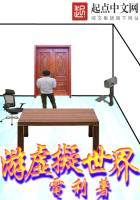HYPERBOLA OR PARABOLA
We may, perhaps, be astonished to find Barbicane and his companions so little occupied with the future reserved for them in their metal prison which was bearing them through the infinity of space. Instead of asking where they were going, they passed their time ****** experiments, as if they had been quietly installed in their own study.
We might answer that men so strong-minded were above such anxieties-- that they did not trouble themselves about such trifles-- and that they had something else to do than to occupy their minds with the future.
The truth was that they were not masters of their projectile;they could neither check its course, nor alter its direction.
A sailor can change the head of his ship as he pleases; an aeronaut can give a vertical motion to his balloon. They, on the contrary, had no power over their vehicle. Every maneuver was forbidden. Hence the inclination to let things alone, or as the sailors say, "let her run."Where did they find themselves at this moment, at eight o'clock in the morning of the day called upon the earth the 6th of December?
Very certainly in the neighborhood of the moon, and even near enough for her to look to them like an enormous black screen upon the firmament. As to the distance which separated them, it was impossible to estimate it. The projectile, held by some unaccountable force, had been within four miles of grazing the satellite's north pole.
But since entering the cone of shadow these last two hours, had the distance increased or diminished? Every point of mark was wanting by which to estimate both the direction and the speed of the projectile.
Perhaps it was rapidly leaving the disc, so that it would soon quit the pure shadow. Perhaps, again, on the other hand, it might be nearing it so much that in a short time it might strike some high point on the invisible hemisphere, which would doubtlessly have ended the journey much to the detriment of the travelers.
A discussion arose on this subject, and Michel Ardan, always ready with an explanation, gave it as his opinion that the projectile, held by the lunar attraction, would end by falling on the surface of the terrestrial globe like an aerolite.
"First of all, my friend," answered Barbicane, "every aerolite does not fall to the earth; it is only a small proportion which do so; and if we had passed into an aerolite, it does not necessarily follow that we should ever reach the surface of the moon.""But how if we get near enough?" replied Michel.
"Pure mistake," replied Barbicane. "Have you not seen shooting stars rush through the sky by thousands at certain seasons?""Yes."
"Well, these stars, or rather corpuscles, only shine when they are heated by gliding over the atmospheric layers. Now, if they enter the atmosphere, they pass at least within forty miles of the earth, but they seldom fall upon it. The same with our projectile. It may approach very near to the moon, and not yet fall upon it.""But then," asked Michel, "I shall be curious to know how our erring vehicle will act in space?""I see but two hypotheses," replied Barbicane, after some moments' reflection.
"What are they?"
"The projectile has the choice between two mathematical curves, and it will follow one or the other according to the speed with which it is animated, and which at this moment I cannot estimate.""Yes," said Nicholl, "it will follow either a parabola or a hyperbola.""Just so," replied Barbicane. "With a certain speed it will assume the parabola, and with a greater the hyperbola.""I like those grand words," exclaimed Michel Ardan; "one knows directly what they mean. And pray what is your parabola, if you please?""My friend," answered the captain, "the parabola is a curve of the second order, the result of the section of a cone intersected by a plane parallel to one of the sides.""Ah! ah!" said Michel, in a satisfied tone.
"It is very nearly," continued Nicholl, "the course described by a bomb launched from a mortar.""Perfect! And the hyperbola?"
"The hyperbola, Michel, is a curve of the second order, produced by the intersection of a conic surface and a plane parallel to its axis, and constitutes two branches separated one from the other, both tending indefinitely in the two directions.""Is it possible!" exclaimed Michel Ardan in a serious tone, as if they had told him of some serious event. "What I particularly like in your definition of the hyperbola (I was going to say hyperblague) is that it is still more obscure than the word you pretend to define."Nicholl and Barbicane cared little for Michel Ardan's fun.
They were deep in a scientific discussion. What curve would the projectile follow? was their hobby. One maintained the hyperbola, the other the parabola. They gave each other reasons bristling with _x_. Their arguments were couched in language which made Michel jump. The discussion was hot, and neither would give up his chosen curve to his adversary.
This scientific dispute lasted so long that it made Michel very impatient.
"Now, gentlemen cosines, will you cease to throw parabolas and hyperbolas at each other's heads? I want to understand the only interesting question in the whole affair. We shall follow one or the other of these curves? Good. But where will they lead us to?""Nowhere," replied Nicholl.
"How, nowhere?"
"Evidently," said Barbicane, "they are open curves, which may be prolonged indefinitely.""Ah, savants!" cried Michel; "and what are either the one or the other to us from the moment we know that they equally lead us into infinite space?"Barbicane and Nicholl could not forbear smiling. They had just been creating "art for art's sake." Never had so idle a question been raised at such an inopportune moment. The sinister truth remained that, whether hyperbolically or parabolically borne away, the projectile would never again meet either the earth or the moon.
What would become of these bold travelers in the immediate future?















